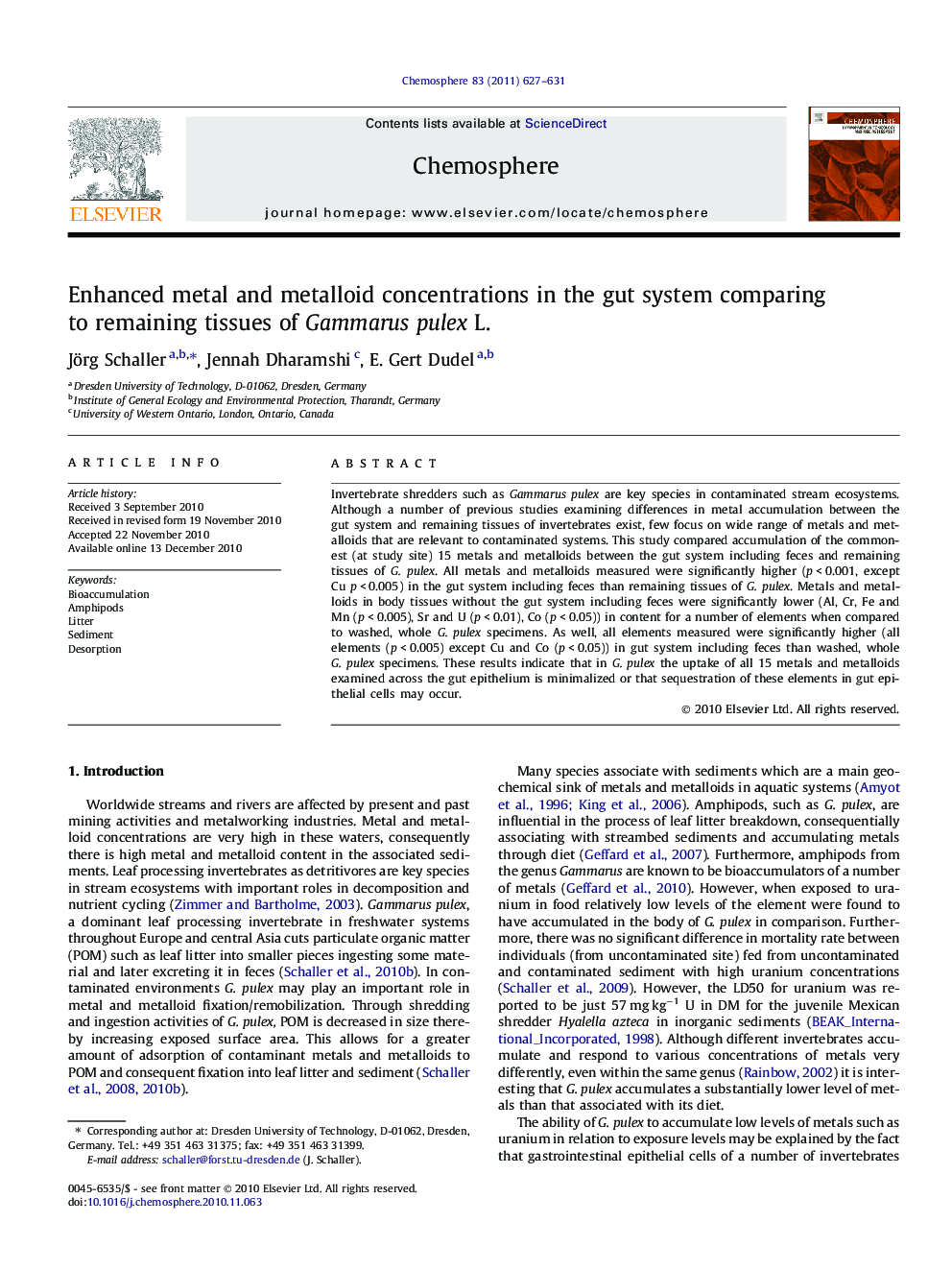| Article ID | Journal | Published Year | Pages | File Type |
|---|---|---|---|---|
| 4411089 | Chemosphere | 2011 | 5 Pages |
Invertebrate shredders such as Gammarus pulex are key species in contaminated stream ecosystems. Although a number of previous studies examining differences in metal accumulation between the gut system and remaining tissues of invertebrates exist, few focus on wide range of metals and metalloids that are relevant to contaminated systems. This study compared accumulation of the commonest (at study site) 15 metals and metalloids between the gut system including feces and remaining tissues of G. pulex. All metals and metalloids measured were significantly higher (p < 0.001, except Cu p < 0.005) in the gut system including feces than remaining tissues of G. pulex. Metals and metalloids in body tissues without the gut system including feces were significantly lower (Al, Cr, Fe and Mn (p < 0.005), Sr and U (p < 0.01), Co (p < 0.05)) in content for a number of elements when compared to washed, whole G. pulex specimens. As well, all elements measured were significantly higher (all elements (p < 0.005) except Cu and Co (p < 0.05)) in gut system including feces than washed, whole G. pulex specimens. These results indicate that in G. pulex the uptake of all 15 metals and metalloids examined across the gut epithelium is minimalized or that sequestration of these elements in gut epithelial cells may occur.
Research highlights► Metal and metalloids were unbound to the exterior surfaces of G. pulex. ► Metals and metalloid uptake in G. pulex via the gut system is minimalized. ► Gut system including feces significantly affect the metal body content of G. pulex.
